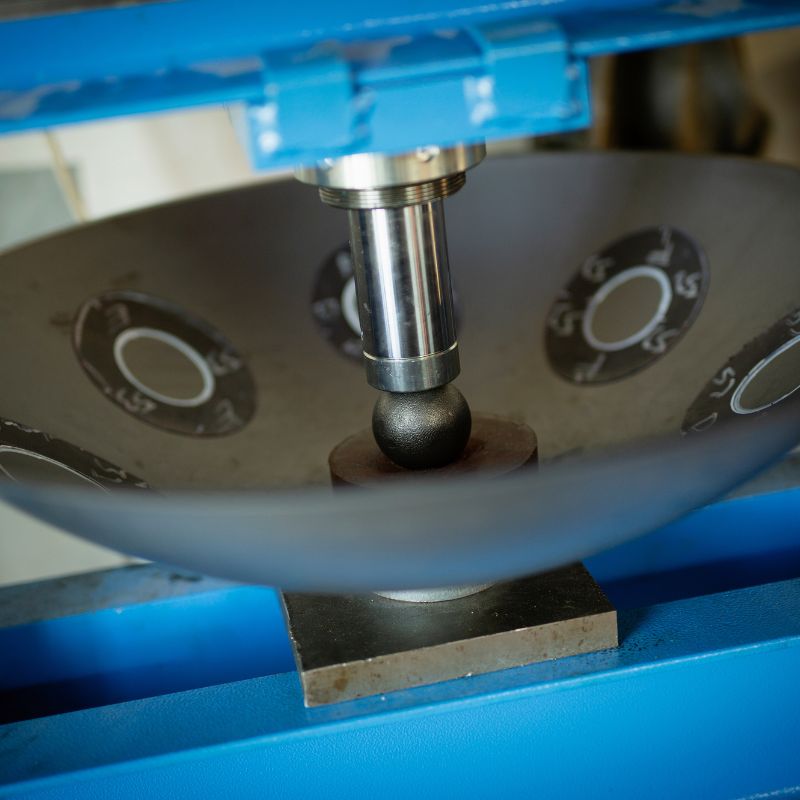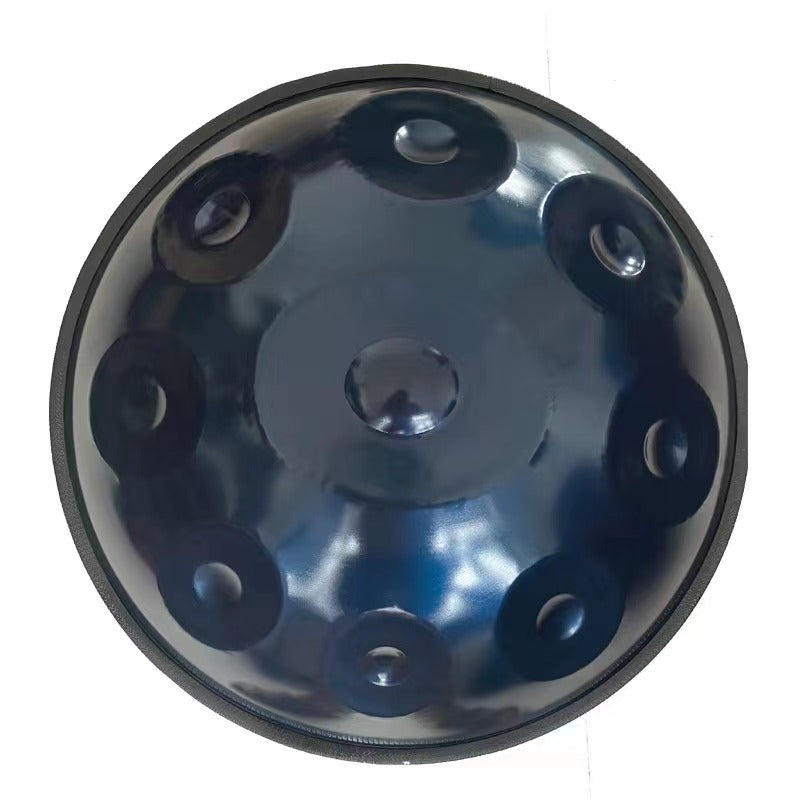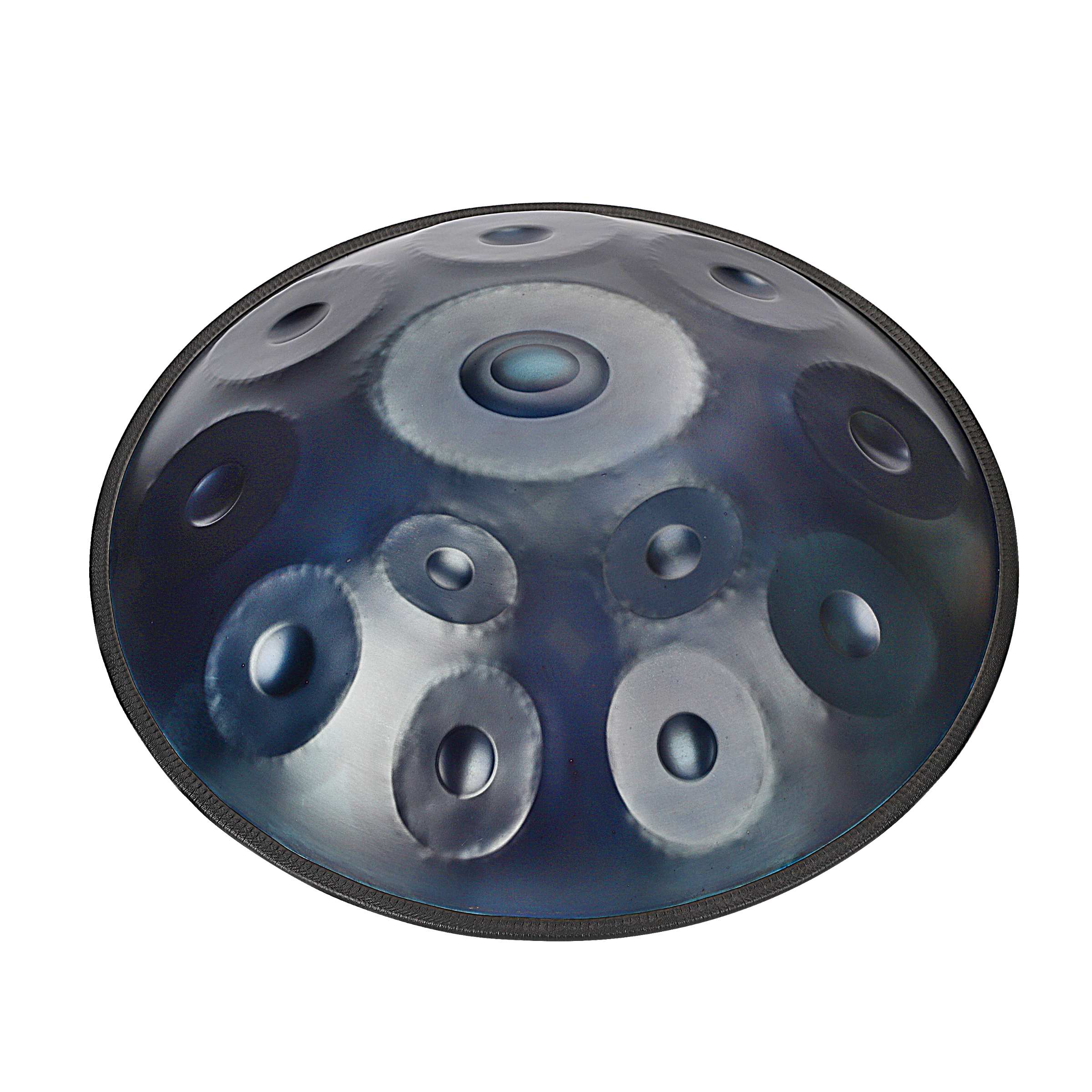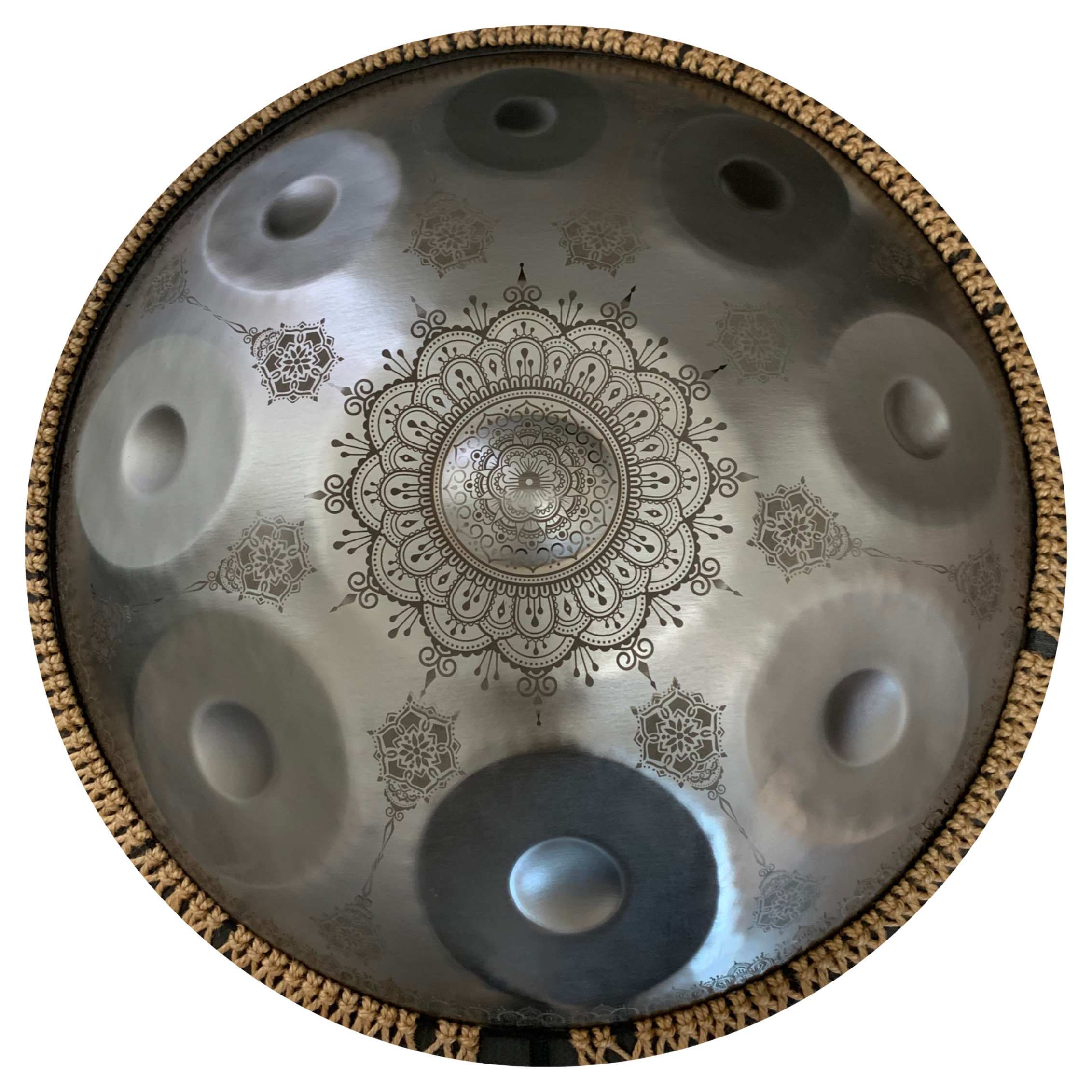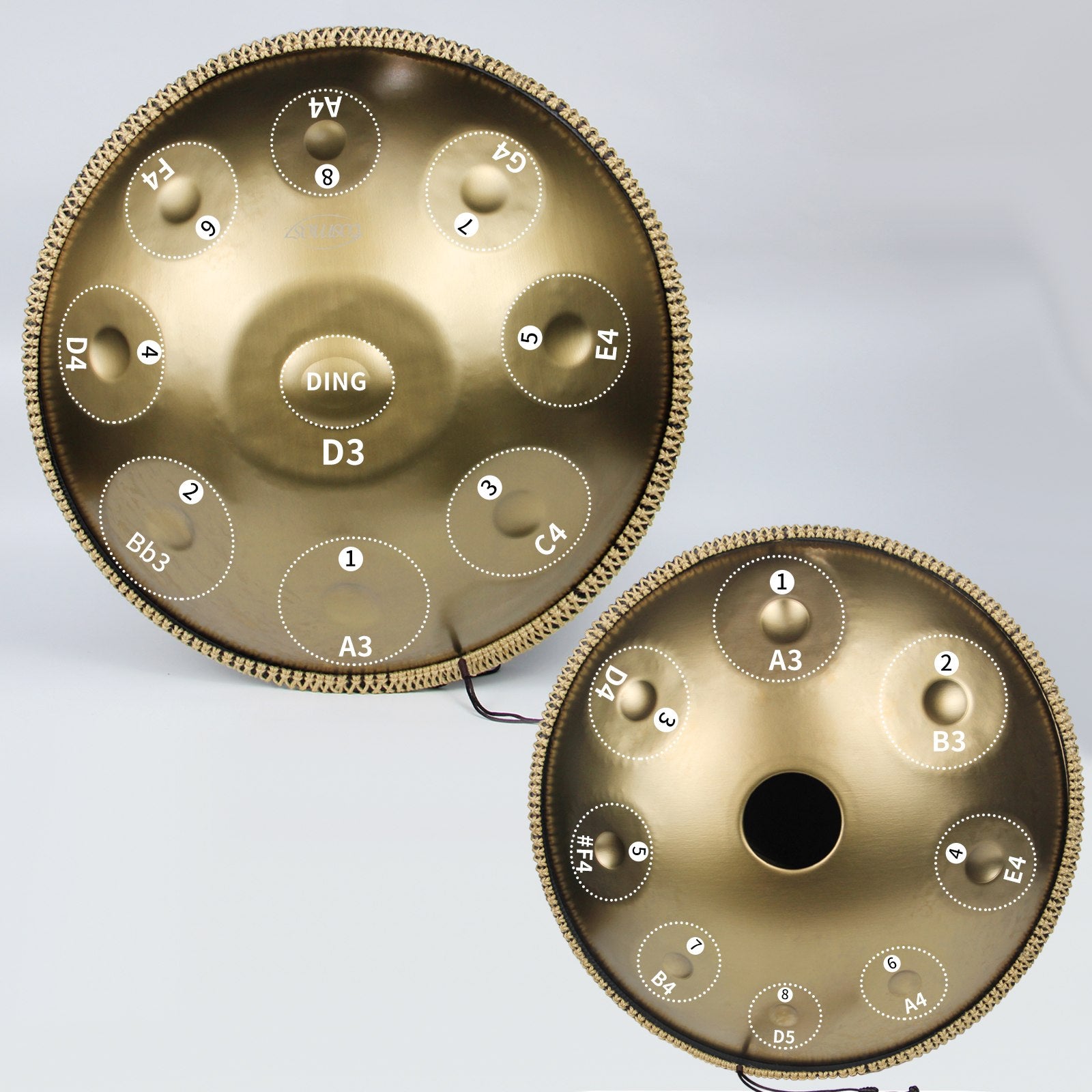Das Handpan, mit seinen fesselnden Tönen und dem einzigartigen Design, ist ein Zeugnis für die Kunstfertigkeit und das Handwerk, die in seiner Herstellung stecken. Der Produktionsprozess des Handpans ist eine sorgfältige Reise, die technische Präzision mit kreativer Ausdrucksweise verbindet. In diesem Blogbeitrag werden wir einen genaueren Blick darauf werfen, wie der Produktionsprozess des Handpans funktioniert, von den ersten Phasen der Materialauswahl bis hin zur finalen Stimmung und den letzten Schliffen, die zu einem harmonischen Meisterwerk führen.
-
Materialauswahl: Die Reise beginnt mit der sorgfältigen Auswahl der Materialien. Hochwertiger Stahl wird typischerweise wegen seiner Haltbarkeit und Resonanz gewählt. Die spezifische Art von Stahl, oft eine Art von Edelstahl, trägt zu den klanglichen Eigenschaften des Handpans bei. Das gewählte Material durchläuft einen sorgfältigen Vorbereitungsprozess, um eine saubere und makellose Grundlage für das Instrument zu gewährleisten.
-
Formen und Hämmern: Der ausgewählte Stahl wird dann durch Formen und Hämmern umgeformt. Die oberen und unteren Schalen des Handpans werden geformt, wodurch die charakteristische konkave Form entsteht, die das Instrument definiert. Geschickte Handwerker verwenden Hämmer und andere spezialisierte Werkzeuge, um den Stahl sorgfältig zu formen und ihn allmählich in die gewünschte Form zu bringen.
-
Doming und Notenlayout: Der Formungsprozess wird gefolgt von Doming, bei dem der zentrale Notenbereich des Handpans sorgfältig angehoben wird, um eine resonante Kammer zu schaffen. Das Layout der einzelnen Noten wird dann präzise markiert und ausgeschnitten. Die Positionierung der Noten ist ein entscheidender Aspekt des Designs des Handpans, der den Gesamtklang und die Spielbarkeit beeinflusst.
-
Die Stimmung der Töne: Die Stimmung ist eine empfindliche und komplexe Phase des Produktionsprozesses. Jeder Ton wird sorgfältig gestimmt, um die gewünschte Tonhöhe und harmonische Resonanz zu erreichen. Stimmer verwenden eine Kombination aus Hämmern, Wärme und Feinstimmwerkzeugen, um das Metall anzupassen und jeden Ton in Harmonie mit den anderen zu bringen. Diese Phase erfordert sowohl technisches Fachwissen als auch ein feines Gehör für musikalische Nuancen.
-
Wärmebehandlung und Tempern: Nach dem Stimmen durchläuft das Handpan Wärmebehandlungs- und Temperprozesse, um seine strukturelle Integrität und klanglichen Eigenschaften zu verbessern. Diese Schritte beinhalten sorgfältig kontrolliertes Erhitzen und Abkühlen, was zur Haltbarkeit und Stabilität des Instruments beiträgt.
-
Letzte Schliffe: Sobald die Töne gestimmt und die strukturellen Elemente verfeinert sind, erhält das Handpan seine letzten Schliffe. Dazu gehört das Glätten und Verfeinern der Oberfläche, das Auftragen von Schutzbeschichtungen und das Hinzufügen dekorativer Elemente, falls gewünscht. Die ästhetischen Details, wie das Design und die Oberfläche des Instruments, werden so ausgewählt, dass sie die klangliche Schönheit ergänzen.
-
Qualitätskontrolle: Die letzte Phase umfasst umfassende Qualitätskontrollmaßnahmen. Jedes Handpan wird inspiziert, um sicherzustellen, dass es den Standards des Herstellers für Klangqualität, Handwerkskunst und Haltbarkeit entspricht. Notwendige Anpassungen werden vorgenommen, um potenzielle Probleme zu beheben und um zu garantieren, dass das fertige Produkt eine wahre Reflexion der Vision des Kunsthandwerkers ist.

